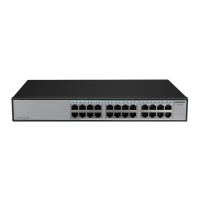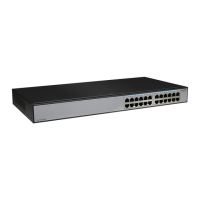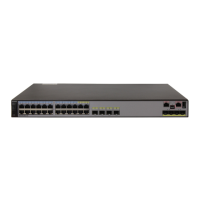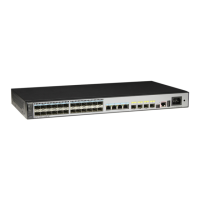SNMPv3 uses a more sophisticated authentication process that is divided into two parts. The
first part is to maintain a list of users and their attributes are allowed to act as SNMP
managers. The second part describes which user on that list can do as an SNMP manager.
The Switch allows groups of users to be listed and configured with a shared set of privileges.
The SNMP version may also be set for a listed group of SNMP managers. Thus, you may
create a group of SNMP managers that are allowed to view read-only information or receive
traps using SNMPv1 while assigning a higher level of security to another group, granting
read/write privilege using SNMPv3.
Traps
Traps are messages that alert network personnel events that occur on the Switch. The events
can be as serious as a reboot (someone accidentally turned OFF the Switch), or less serious
like a port status change. The Switch generates traps and sends them to the trap recipient (or
network manager). Typical traps include trap messages for Authentication Failure, Topology
Change and Broadcast\Multicast Storm.
MIB
The Switch in the Management Information Base (MIB) stores management and counter
information. The Switch uses the standard MIB-II Management Information Base module.
Consequently, values for MIB objects can be retrieved from any SNMP-based network
management software.
10.1.1 SNMP Global Settings
Click Network > SNMP > SNMP Global Settings to set the SNMP global parameters on
switch, the configuration page is displayed as follows.
Figure 10-1 SNMP Global Settings
Table 10-1 Parameters of SNMP Global Settings

